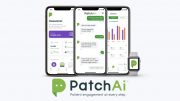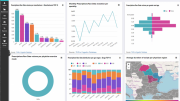Historically, pharmaceutical research and development has been shrouded in mystery. But, as big data continues to transform healthcare, we need to overcome the ongoing reluctance to share data in order to unlock the benefits it can deliver. Katharine Briggs, Research Leader at Lhasa Limited, discusses some of the challenges surrounding the sharing of proprietary data and looks at how an honest broker can help.
We know that one of the challenges the industry faces in medical research is the scarcity of real-world data which is openly available to academic researchers and other parties developing new and improved drugs. This is having an impact on the cost of getting a single drug to the market, with a recent study estimating this to be approximately $350m. Nonetheless, many companies are sitting on a gold mine of big data and, despite the high costs involved in bringing drugs to the market, many in the industry are still reluctant to collaborate. Ultimately, sharing this analysis could significantly reduce the product development lifecycle.
A rise in collaboration and dissemination of data is not only in the interest of public health, but is also increasingly required by funding organisations and is a vital part of achieving a reduction in animal testing. Aside from the ethical benefits, a reduction in animal testing also delivers other savings in terms of time and money, plus the data and knowledge gained in sharing data could enable more informed decisions about what substances to test and what tests to perform. An initiative led by the NC3Rs and the MHRA involving 32 organisations sharing data for 137 compounds and 259 studies identified that the use of recovery animals could be reduced by up to 66%, saving thousands of animals globally each year.
So, in the face of these obvious benefits, what is holding businesses back? Regulations to protect the privacy of personal health information are often seen as potential barriers to data sharing due to the risk of accidental, malicious or compelled disclosure. However, data can still be shared as long as privacy safeguards are in place. Redacting data to strip out individual identifiers, statistically altering data in ways which do not compromise secondary analysis and placing restrictions on access to data are all simple steps that can be taken to secure it.
A survey of 1,329 scientists suggested that another concern amongst the pharmaceutical community was the idea that data could be misused. However, creating an End User License where users are required to agree to certain conditions of use, including specific authorisation requirements from the data owner and limiting access to certain users, are measures that can easily be put in place to mitigate risk.
Data being stored in disparate repositories, in different formats and using potentially incompatible data types presents another significant technical challenge but not one that is insurmountable. However, the additional resource needed to convert the data to an agreed format will add to the cost of data sharing. It also makes sense to opt for platform-independent file formats for exporting and importing data such as XML (extensible markup language), CSV (comma separated value) or SDF (structure data file), which can be opened using several software applications. However, using the same format for exporting and importing data does not avoid differences in what data are captured or how those data are captured e.g. as a number, text, etc. Here, data standards such as SEND can ensure that the data being captured are compatible.
Responsibility for deciding if data can be shared is often delegated to legal and IP departments. The disadvantage of this is that they only see the risks and not the benefits of data sharing and, being risk adverse, say ‘no’’ by default. In addition, the utility of the data can be difficult to demonstrate ahead of the data being donated. In these circumstances, providing a summary about the project which can be shared with upper management and departments involved in granting authorisation, can help to increase publicity and facilitate decision-making.
In the case of confidential data, an honest broker can be utilised in order to protect the security of sensitive data. This organisation needs to be trusted by all partners as they will have access to all the data and be responsible for controlling access for the other partners. A not-for-profit or academic organisation is likely to be preferred over a commercial one for this reason.
The Elemental Impurities project is a collaborative data-sharing project; one of several projects initiated by the pharmaceutical industry in partnership with honest broker and not-for-profit, Lhasa Limited, which enables pre-competitive data sharing.
The collaboration was designed to share analytical data on the levels of trace elements within batches of excipients used in the formulation of pharmaceutical drug products. Its objective is to increase the understanding of the level of risk posed by elemental impurities present in excipients.
Those organisations involved in the data sharing project have been given the opportunity to make use of existing information on Elemental Impurity levels, present in a wide range of pharmaceutical excipients, which is not in the public domain. This collaboration with others has also facilitated more scientifically driven elemental impurities risk assessments. Ultimately, this will lead to more efficient use of laboratory resources and reduce unnecessary analysis.
Crucially, Lhasa Limited acts as an honest broker and expertly curates the data from participating organisations. This allows a level of anonymity, whereby the submitting companies are known to each other, but who submitted what data and the specific excipient supplier are known only to Lhasa.
Over the past decade, data sharing within the pharmaceutical industry has evolved from being virtually non-existent to a landscape where most companies will have gained experience through one or more initiatives. However, for the pharmaceutical sector to truly benefit, data collaboration needs to be incorporated into business as usual, rather than remaining the preserve of special projects.
Data still exists within silos and the people who could do something useful with that data often don’t have access to it. There remains a fear in the sector that sharing data gives away commercial advantages when, in fact, sharing information could significantly reduce overheads and speed up the development of new drugs. With the rising cost of clinical trials and health data, the industry needs to look at collaboration as the way forward. Sharing data is not without its challenges but, with the right partners, the benefits far outweigh the risks.





